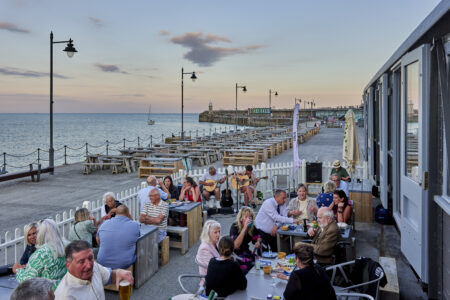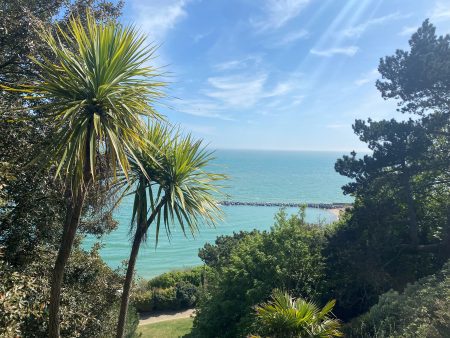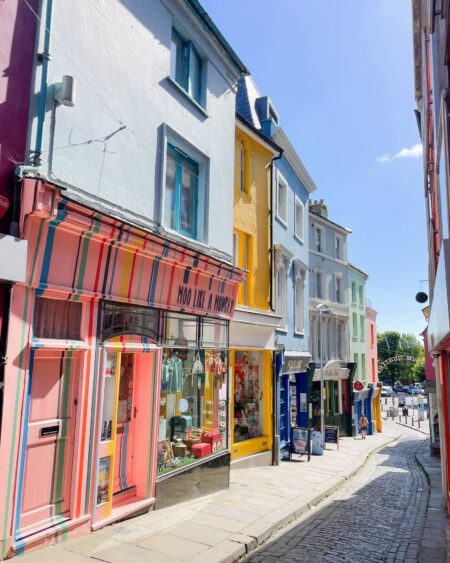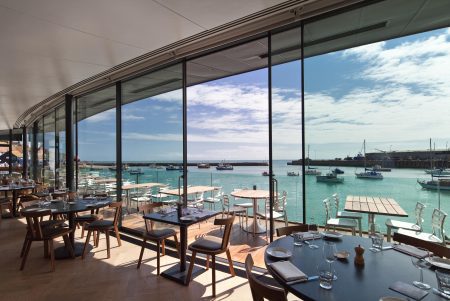FOLKESTONE & FASHION
Inhabited for over 12,000 years, Folkestone has seen it all – and seen its fortunes fluctuate over the centuries, with fishing smuggling, and defending against potential invaders all on the menu. The arrival of the railways in the mid-19th century brought the tourist trade and Folkestone became the height of fashion.
Today’s town combines its old fishing heritage with the redolent grandeur of its heyday in the late 19th and early 20th centuries, and a truly fascinating history.
Highlights: Sunny Sands, The Harbour Arm, Folkestone Fishing, Heritage & History Museum, Leas Cliff Park Formal Gardens, the Old High Street
EMBRACING THE SEA
As you’d expect, Folkestone was first fashionable for the sea but today the town celebrates the coast by putting its best face forward.
Sunny Sands is the closest sandy beach to London, hosts a sandcastle competition every year and is within an easy walk to everything non-beachwise you could ever need.
The Harbour Arm stretches out into the English Channel, protecting the little harbour where fishing and pleasure boats are moored. This former ferry port has been completely reimagined, and today Folkestone Harbour is home to a whole raft of independent food and drink outlets, small shops, pop up events and a programme of activity all year round. Definitely the place to see and be seen!
The Folkestone Fishing, Heritage & History Museum, just behind the Harbour Arm, is a fascinating glimpse of the lives and challenges of those who bring home the bounty of the sea in years gone by. This quaint little museum has lots of interactive activities to keep young and old engaged!


FASHIONABLE FOLKESTONE
Folkestone’s heyday came when the railway reached this seaside town in 1843, bringing with it the “Down From Londoners” who flocked to take in the sea air and stroll the elegant promenades.
Ever quick to realise an opportunity, local business men ensured that large and luxurious hotels were built overlooking the sea, along with the many other amenities a holiday making public would require.
The Formal Gardens at Leas Cliff Coastal Park are where genteel Victorian ladies and their beaux would take a stroll. Overlooking the sparkling English Channel, its planting has been carefully chosen to reflect the Park’s history, provide year round interest, and resistance to dry conditions and the salty air.
The Swinging Sixties came to town when Jimi Hendrix and his band the Experience played a gig at the former Prince Albert Hotel in Rendezvous Street, now adorned with a commemorative blue plaque. After the gig, bass player Noel Redding took the band back to his mum’s house in Folkestone. Legend has it that Jimi wanted to get closer to the fire, but the Redding family dog was hogging the space – thus inspiring the song Fire and the line “move over Rover/let Jimi take over”.
These days, the fashionable folk are to be found running galleries and independent boutiques in the Old High Street area – check out Bounce Vintage, Moo like a Monkey, Objectables and Kitty McCall for some unique finds with something for every budget. There are also some gorgeous cafes should you need to keep your strength up in between all that shopping! Talking of food…


WHERE TO EAT
Rocksalt overlooks the harbour and is said to be “the most beautiful dining room in the UK” – with food to match.
The Harbour Inn does great seafood and pies, Luben’s for pizza, the Bouverie Tap for a bit of everything, and a great atmosphere.
Why not have a good wander and choose whichever takes your fancy?
WHERE TO STAY
With choices ranging from old style luxury, boutique hotels, b&bs and self catering there is a vast selection of accommodation – visit www.folkestonehythe/places-to-stay/ for more information and to make a booking.
GETTING HERE AND OTHER PRACTICALITIES
By car, we’re less than two hours from central London via the M25 and M20, or the M2 and then follow the excellent signs. By train, Southeastern’s high speed rail service will get you here from London in less than an hour. National coach operators serve the area, with bus services around the area from Folkestone central bus station.
Parking: folkestone-hythe.gov.uk/parking/car-parks-in-district
Toilets: folkestone-hythe.gov.uk/parks-beaches-open-spaces/publictoilet-facilities